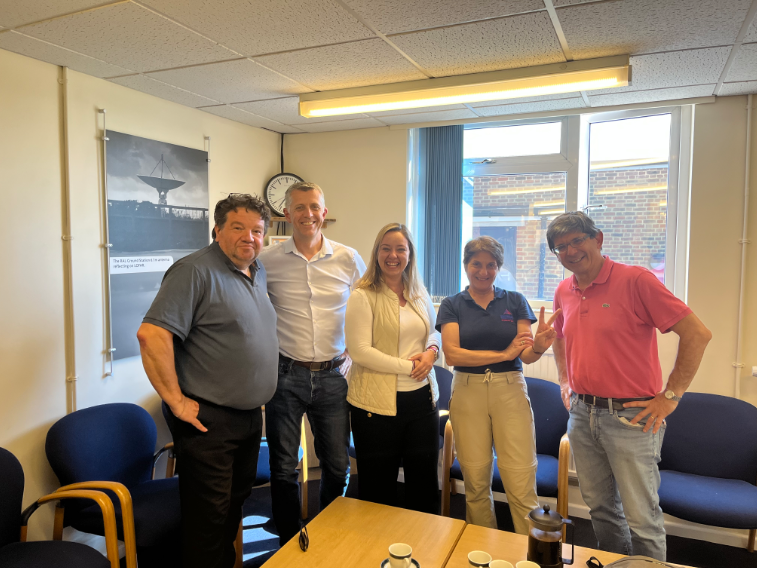The breakthrough marks a significant leap forward in satellite communications technology that will help meet growing demand for high-speed data services.
As streaming services and digital communications drive unprecedented data needs, traditional satellite communications bands are reaching their limits. This new Q-band technology operates at higher frequencies (38-39 GHz), enabling much faster data transfer rates.
The innovative project, a collaboration between the European Space Agency, Canadian satellite communications company Telesat and RAL Space, was performed under a Memorandum of Understanding signed in early 2024 between Telesat and ESA, and funded as an ARTES Advanced Technology activity, supported by the UK Space Agency.
Engineers at RAL Space's Chilbolton Observatory in Hampshire developed and mounted a Q-band receiver on the site's 25-metre dish, which is typically used as a satellite tracking radar. This setup allowed them to establish a stable connection with the Telesat LEO 3 satellite passing overhead.
By promoting higher frequency communications, ESA is driving a fundamental shift in how satellite communication systems are conceived. The Q-band technology offers several critical advantages over older systems, including smaller antennas and compatibility with emerging 5G and 6G communications standards.
This breakthrough will help connect communities, support emergency response systems, and enable new possibilities for digital communications throughout the economy and society.

The teams from RAL Space, Telesat and ESA. Credit: ESA
Antonio Franchi, ESA's Head of Space for 5G/6G and Sustainable Connectivity programme line, said: “We are proud to see our collaboration with Telesat - and now RAL Space - continue to grow, unlocking new opportunities through higher frequency communications. This latest demonstration, supported by the dedicated teams in ESA's CSC and TEC directorates, is a key step toward enabling new 5G and 6G NTN capabilities. It highlights how our Member States are driving innovation to meet both market needs and societal challenges. Congratulations once again to the entire team!"
Dr Emal Rumi, Principal Research and Development Engineer at STFC RAL Space said: “We're witnessing a shift in satellite communications as many operators move from targeting only distant geostationary orbits to increasingly include low earth orbits. This Q-band breakthrough addresses two crucial challenges – the increasing demand for high-speed data, and the rapid growth of LEO telecommunication satellites. Chilbolton Observatory has been driving telecommunication research since the 1980s, and this milestone demonstrates that our expertise in RF design and signal propagation studies is just as relevant today to support partners delivering new research, technologies and services."
Dr Sarah Nash, Programme Lead at RAL Space's Chilbolton Observatory said: “RAL Space and Chilbolton Observatory have been at the forefront of radio research for decades, and this milestone represents exactly the kind of innovation our unique facilities and expertise are here to deliver. This achievement marks an important step forward in satellite communications and I'm proud that our teams have been able to support."
Read more about this milestone and technical details from ESA Connectivity & Secure Communications
